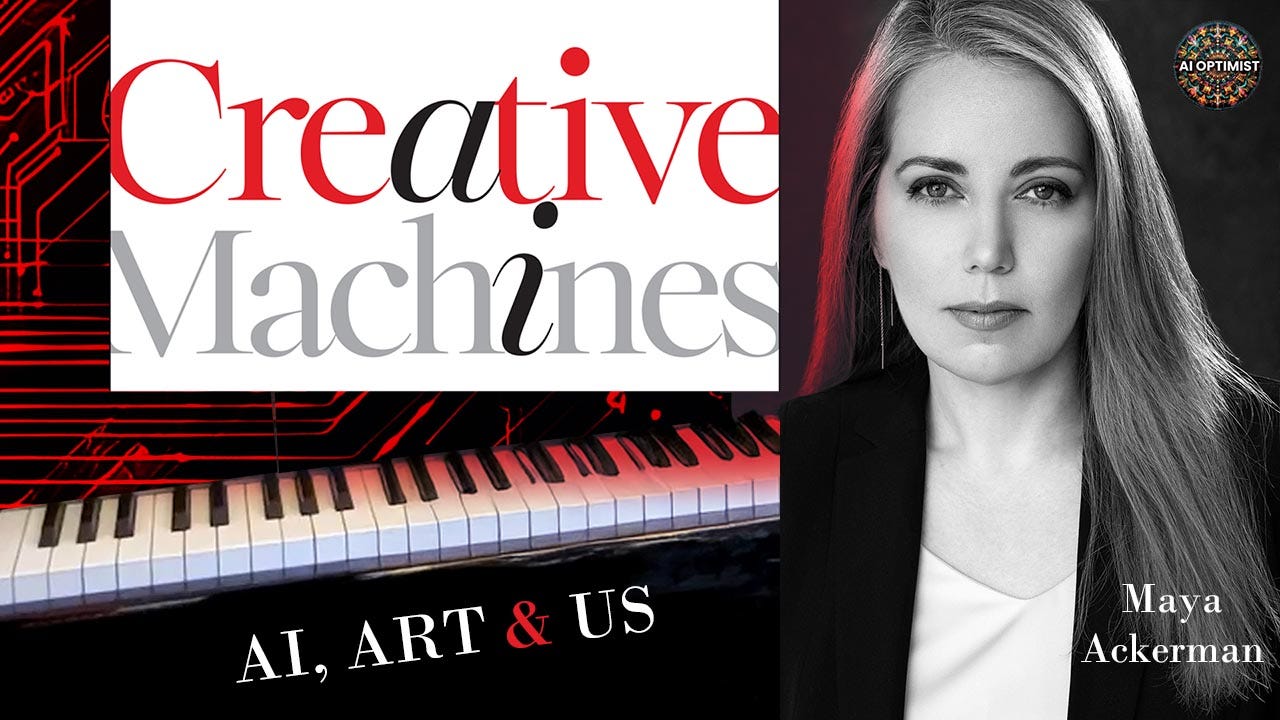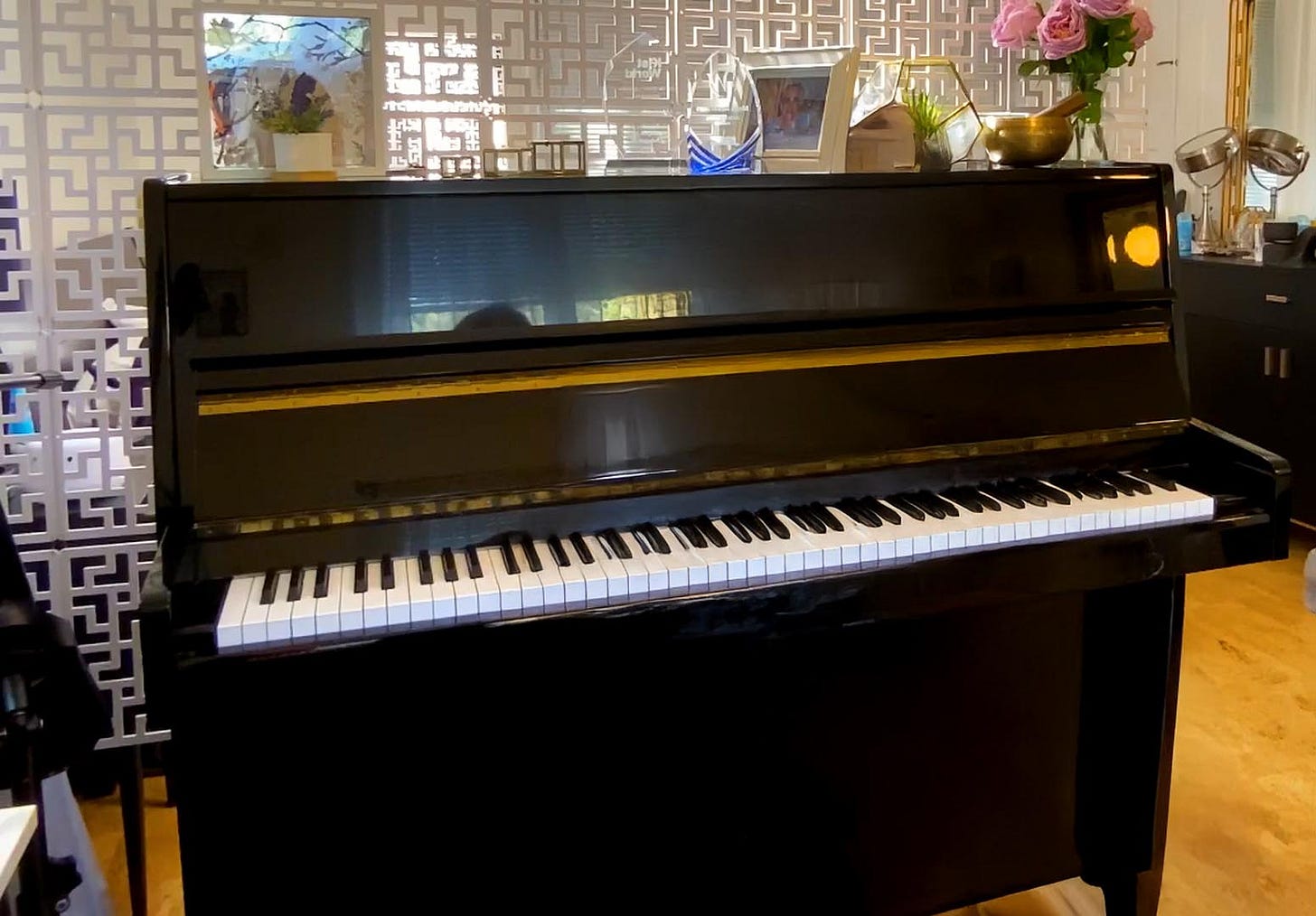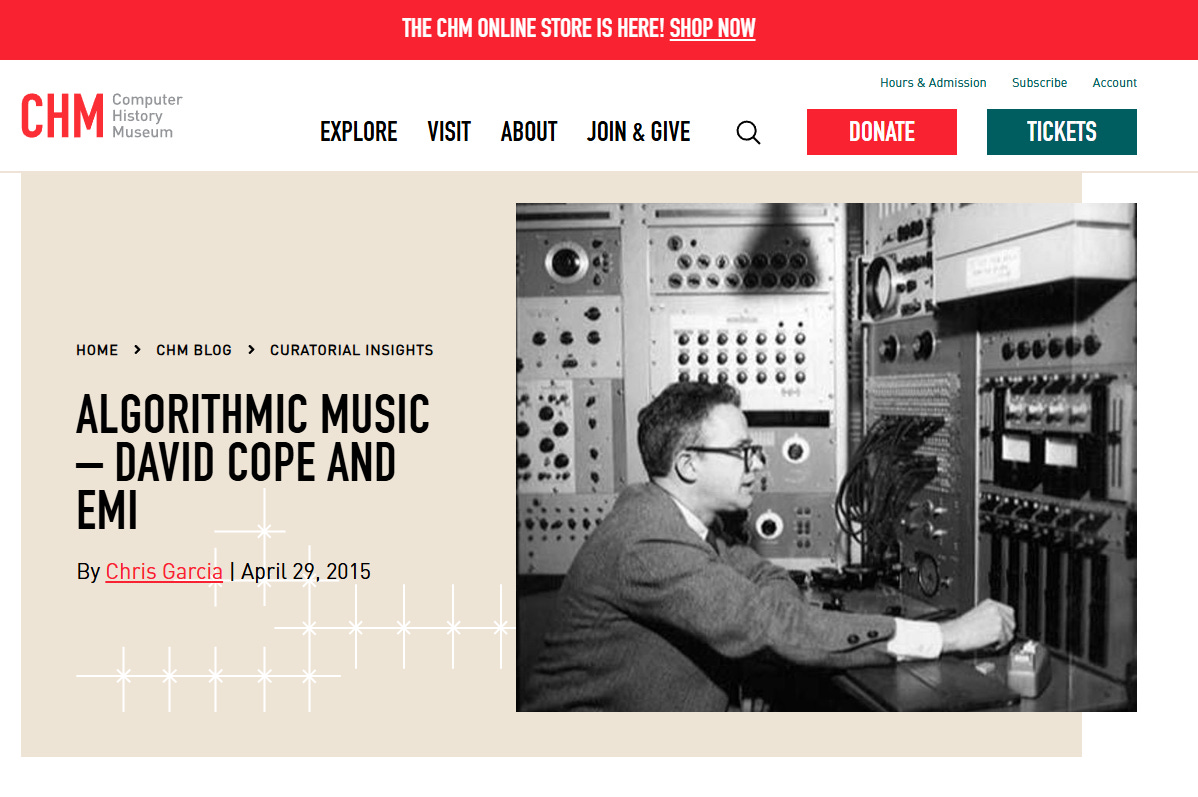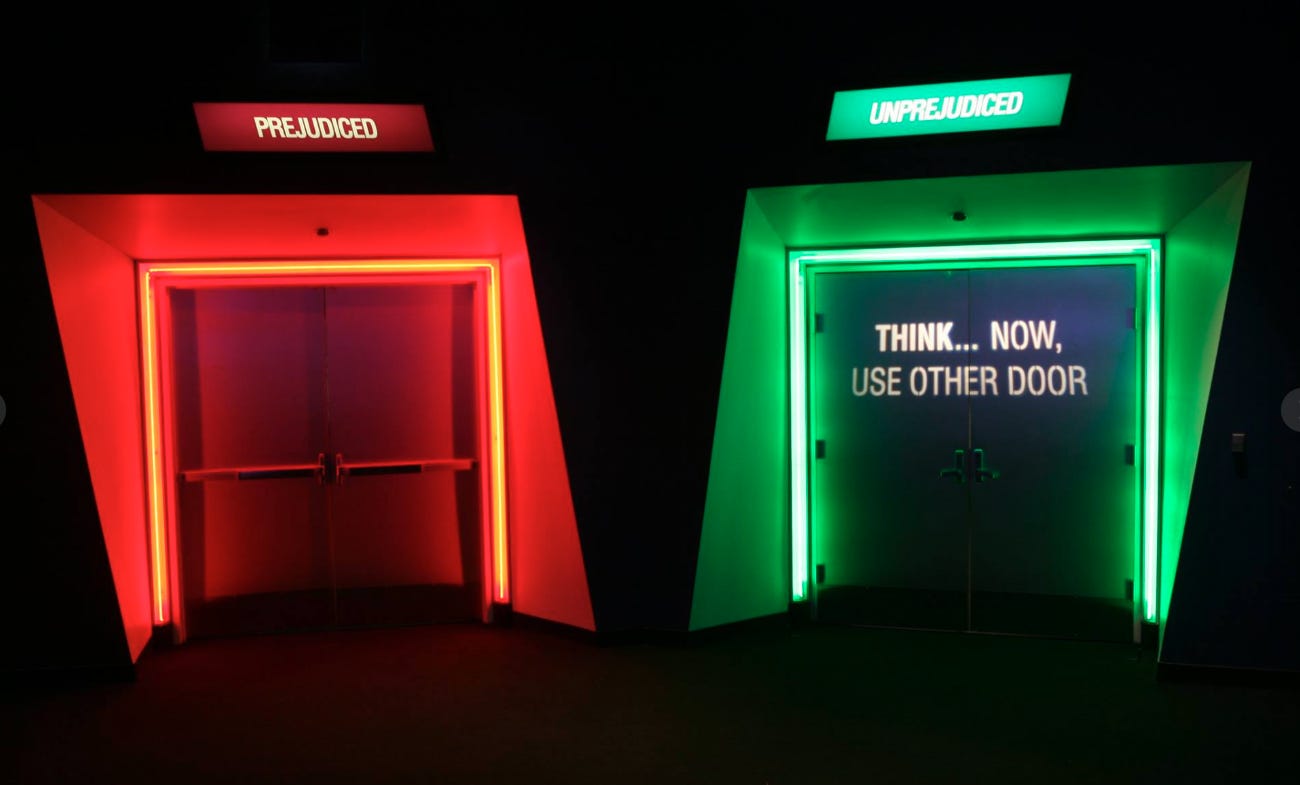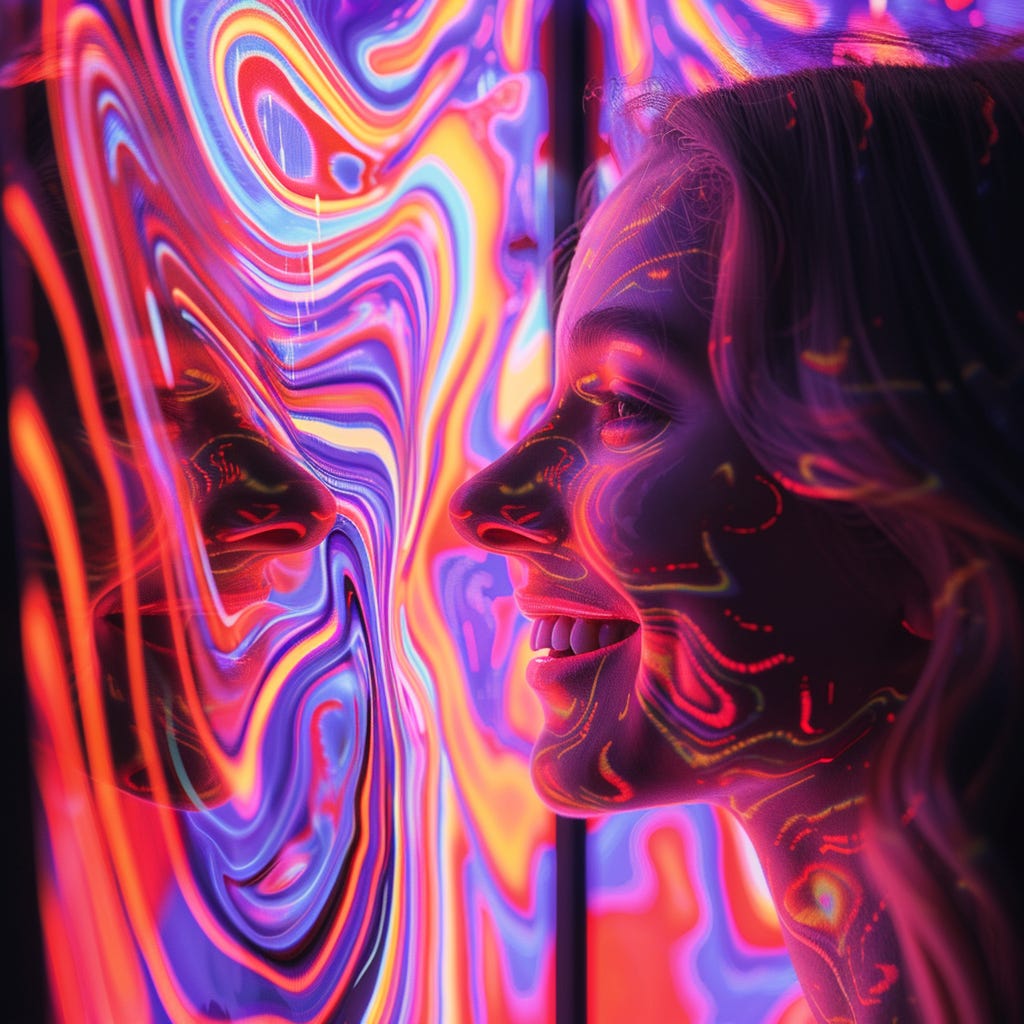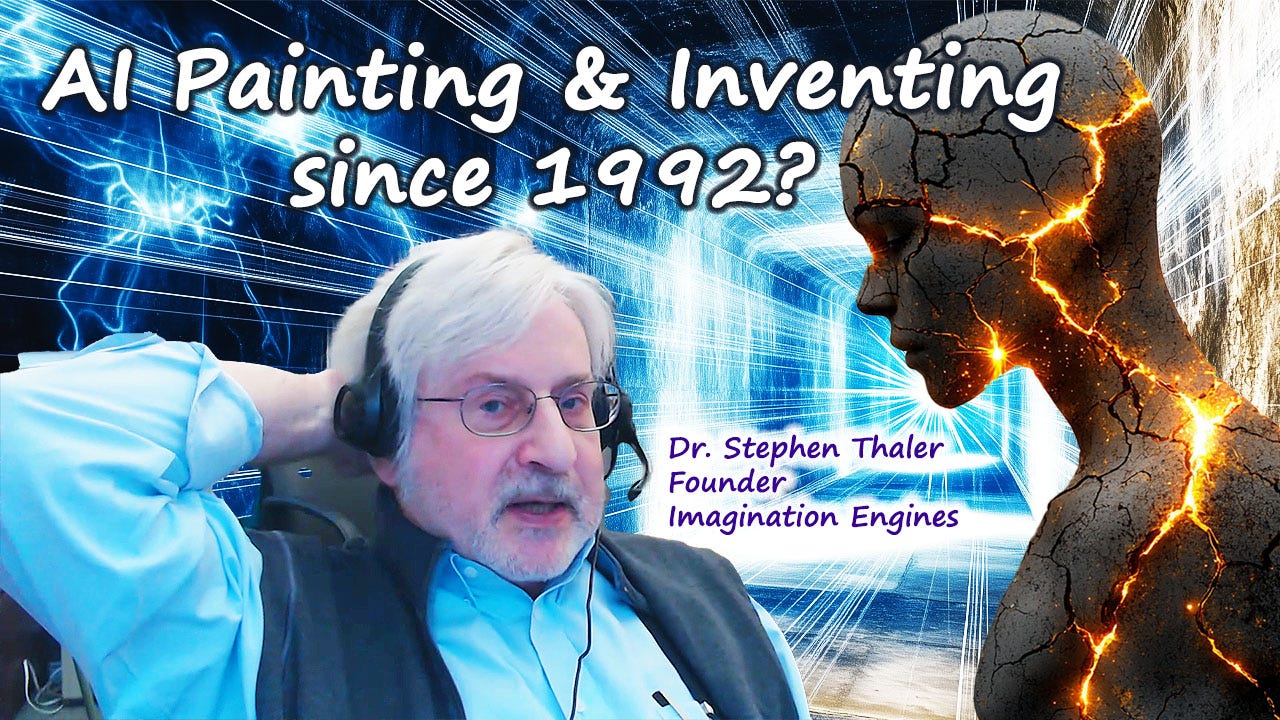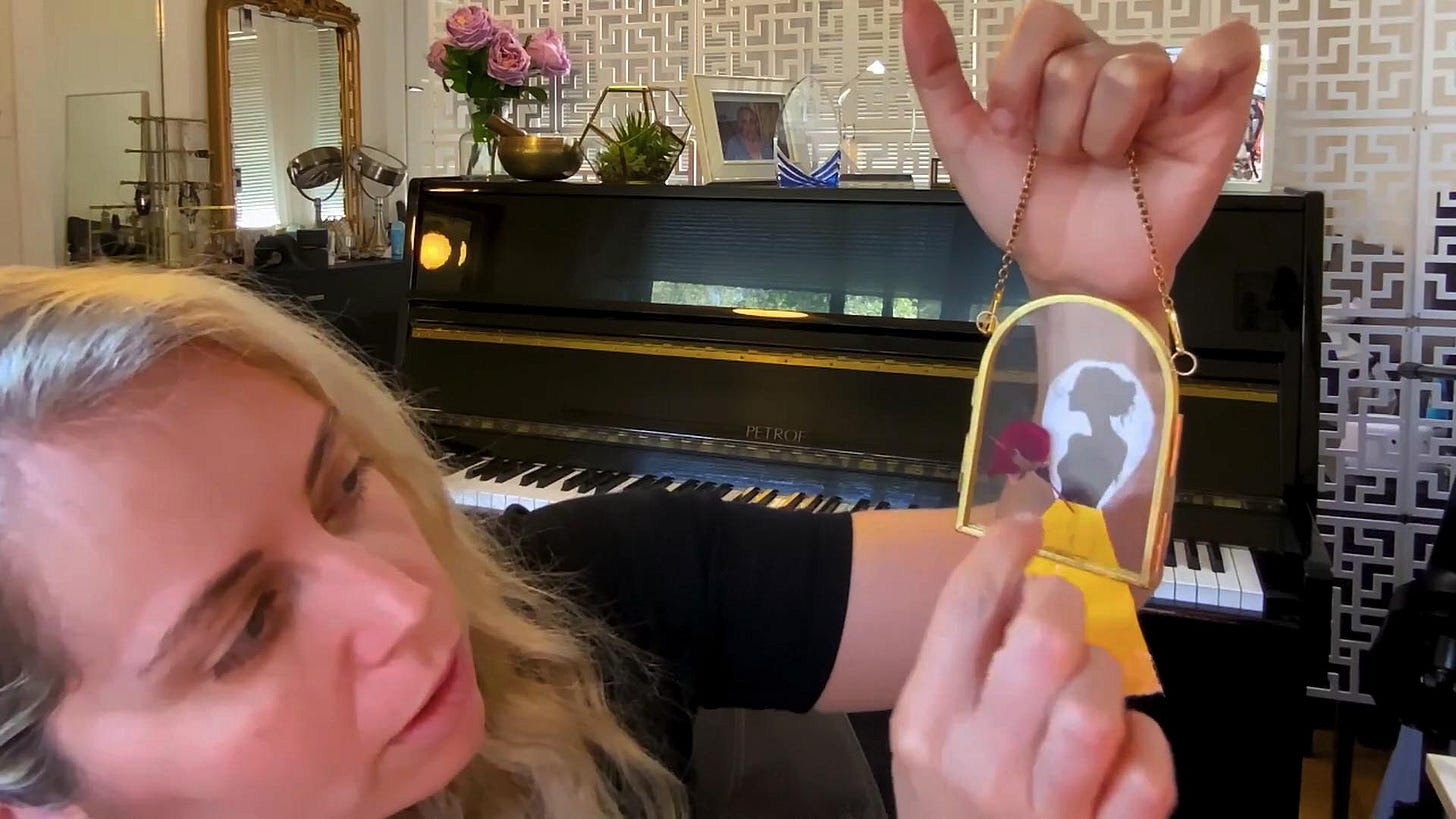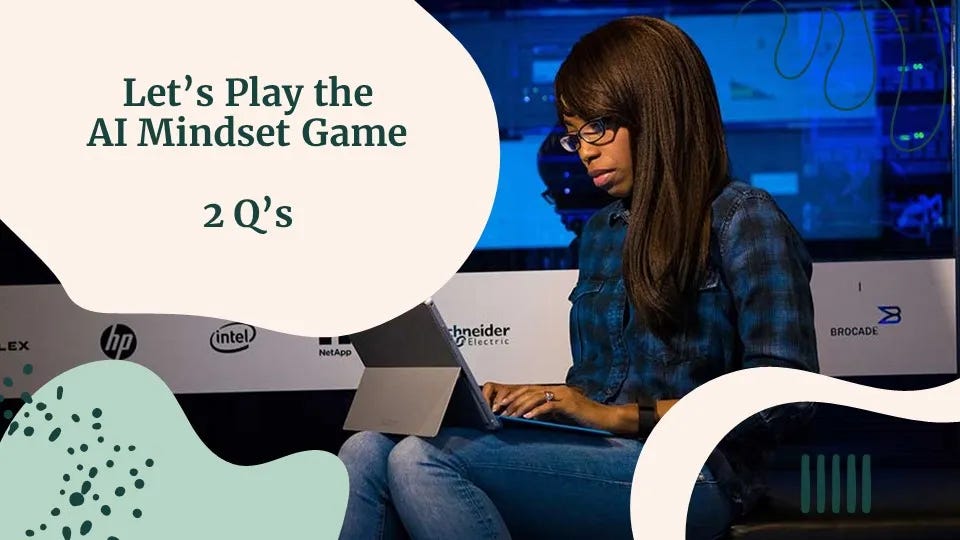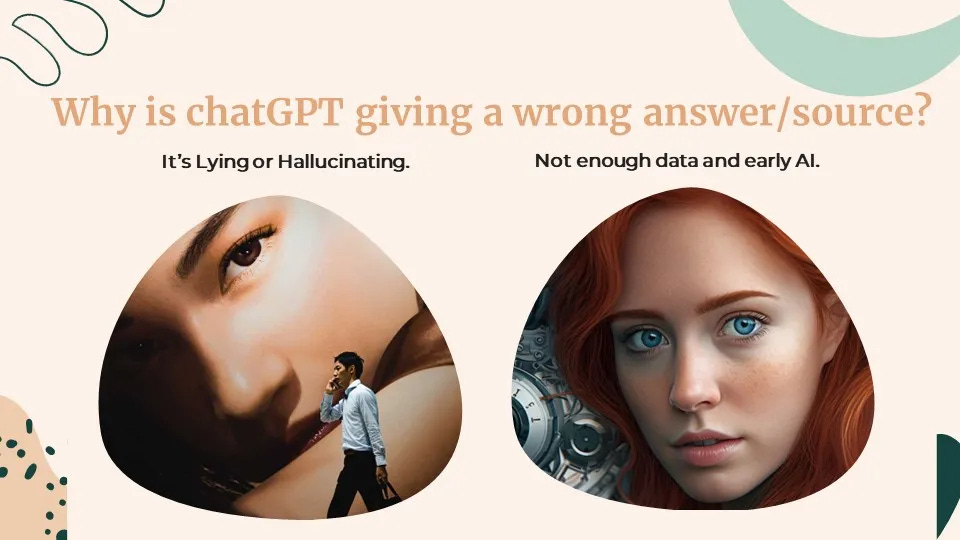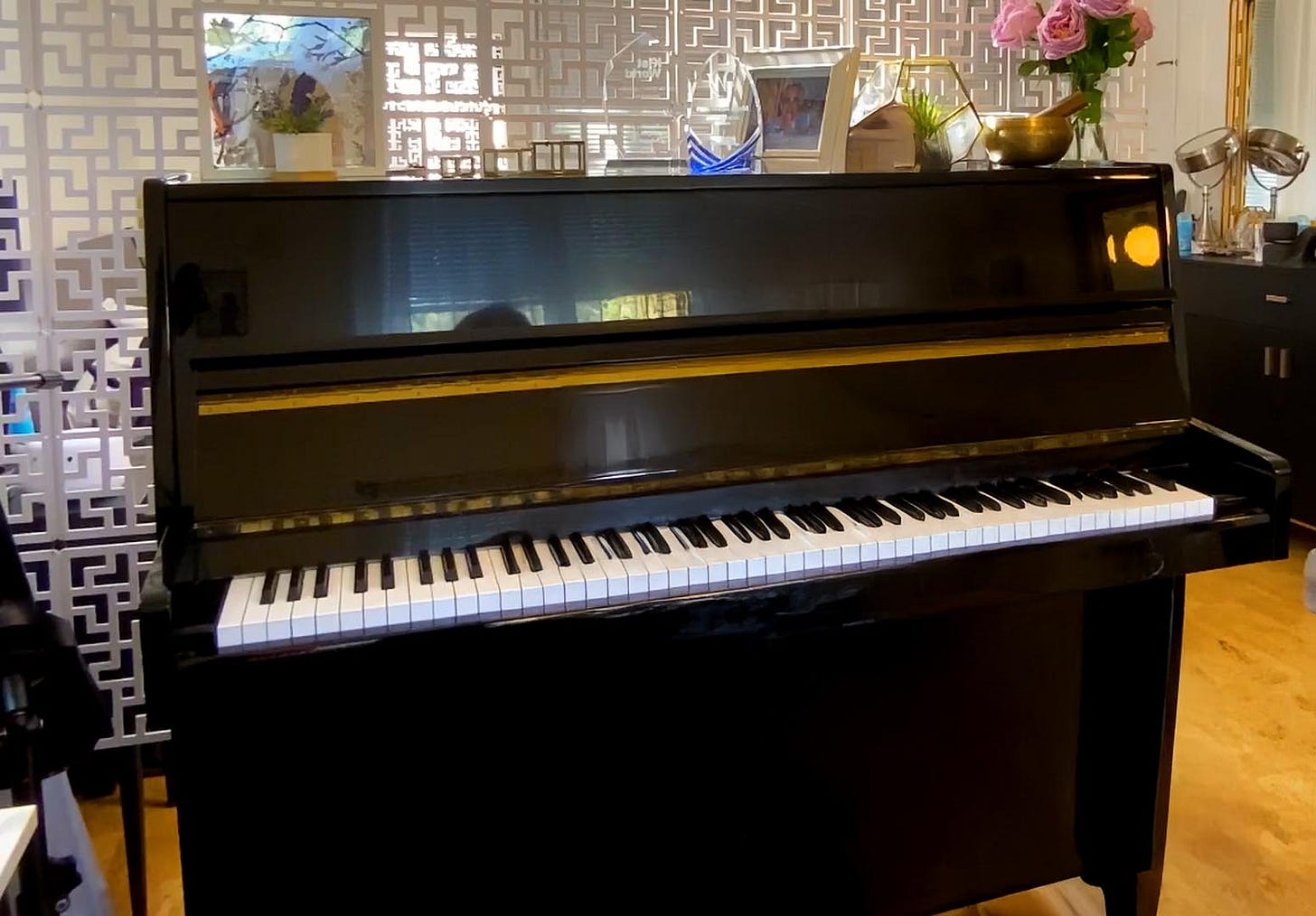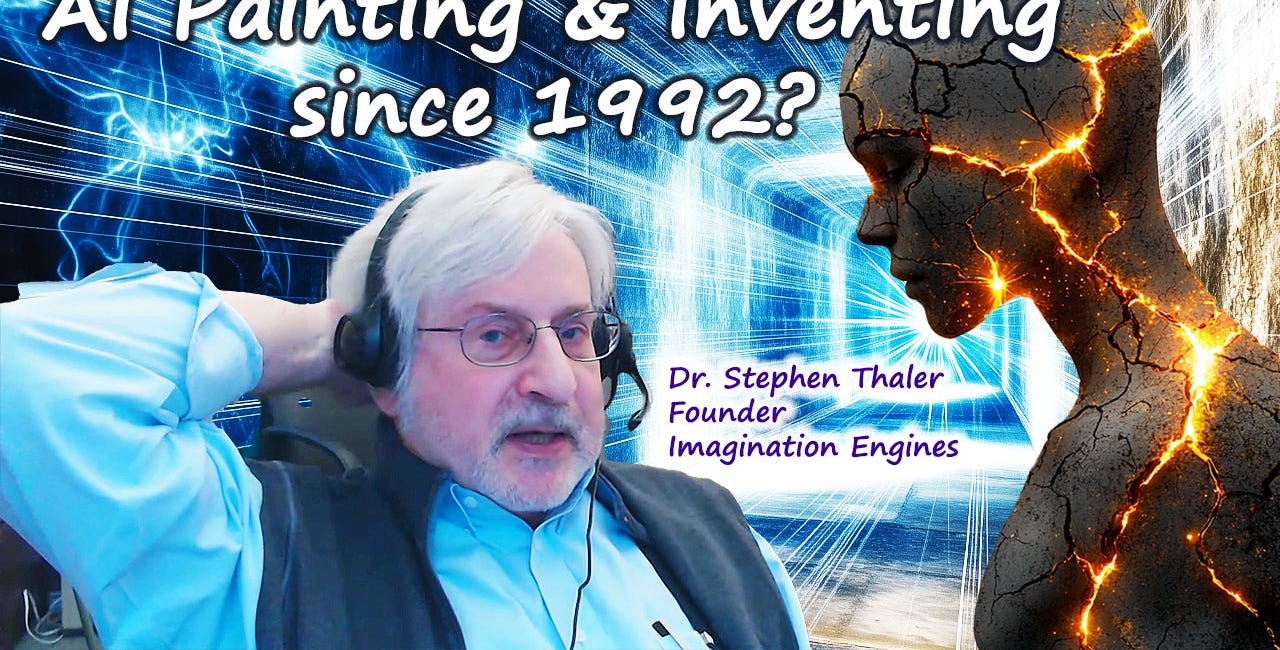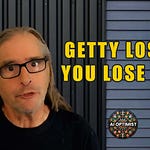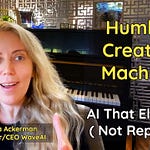Seeing that tall black and brown piano in the background before our interview, I sense tradition of human creativity meeting AI. This is about us.
When Maya Ackerman’s family immigrated to Canada, her piano stayed behind in Israel.
That instrument had been more than wood and keys. It’s where emotions melt into music into a feeling, processing change with simple sounds arising from deep wells of experience.
The piano was, and is, her creative partner - even when it wasn’t there.
Don’t Give Up Your Piano: A Conversation About Creative Machines That Serve, Not Replace
Now, as a professor at Santa Clara University and CEO of WaveAI, Ackerman sees us at risk of losing something far bigger: our collective creative piano.
Not to AI itself, but to fear of what AI might become.
Her new book Creative Machines: AI, Art & Us launches with a message that cuts through the replacement anxiety:
“AI has always been, and will always be, all about us.”
Ackerman spent years in foundational machine learning before a talk by artist Harold Cohen changed everything.
She switched to computational creativity, that unpopular intersection where machines meet human expression.
She’s built AI tools for musicians. She understands both the technical architecture and the artistic soul.
What emerges from our conversation isn’t just about Creative Machines or AI technology.
It’s about us, the creative spark in people. Will we surrender our creativity because AI machines seem capable?
Or will we build humble creative machines that expand human expression?
Let’s walk through what that choice means.

1: The Piano as Lifeline: Why Creativity Matters Now
When I ask the question about what the piano means to her, Ackerman’s voice waivers describing losing her piano for the first time:
“I think creativity was a lifeline for me in a way. Through all this moving around the world... at the piano, my feelings would pour out of me, and I would sort of get to process things that otherwise would just sort of sit dormant and fester inside of me.”
That processing matters. Creative expression is how we make sense of displacement, trauma, change. It’s how we stay human through upheaval.
And it’s how we connect through art to other stories, experiences, history, and fear.
Creativity is our lifeline arising out of the depths of human experience.
Making this moment in history unusually dangerous:
“Now we are at a time in history where people wonder if they should even bother to be creative. Good people.
People who are just afraid of what’s going on in the world. And I don’t want the whole planet to lose the piano, so to speak, the way that I did.”
The fear is real. I see it in creators who message me, asking if learning creative skills still matters when AI can generate images, write copy, compose music.
The replacement narrative sinks deep.
AI Imposter Syndrome, AIS, where we feel like imposters compared to AI, but know deep down AI is generating a ton of slop.
And Ackerman offers a different frame:
“The age of AI doesn’t have to be about taking away creativity for us, it can be the opposite.
It can be about making us more creative, giving us more power...
It’s so important that we don’t hang up our hands because we’re scared, right?”
This isn’t naive optimism. It’s foundational clarity about what we’re really building. Intention matters, now more than ever.
2: Harold Cohen’s Scream—Where Does Creativity Live?
Over 10 years ago, Ackerman sat in the back of a conference room, disappointed with her choice to study machine learning, inspired instead by music and singing. She didn’t know what to do with her life.
Then Harold Cohen took the stage.
The pioneering artist behind AARON—one of the earliest creative AI systems—flashed beautiful images on screen. Maya remembers that he starts screaming:
“This old Jewish man screaming on stage.
‘I was the only voice of reason, saying that I was the creative one.’
That’s what he’s screaming.
How other people were arguing that his machine is creative, but he was the only voice of reason, telling them, look, no, he is the creative one.”
The rawness of that conflict between machines and humans, where creativity lives with 2 sources, felt essential to Ackerman. She switched her entire research field.
Years later, at the end of her book, she returned to Cohen’s insight:
“The machines that we make for us are ultimately all about us, and we need to hold on to the torch and take this responsibility seriously and build the kind of world that we want.”
Creative Machines aren’t the villain or the savior. They’re mirrors and tools.
The question isn’t whether they can create.
It’s what role we design them to play.
3: The Bach Test: Facing Our Bias About Machine Creativity
David Cope’s EMI (Experiments in Musical Intelligence) revealed something uncomfortable in the 1980s. He created what became known as a discrimination test:
“People would be given music and not told which piece was made by a machine, which piece was made by the original Bach in this case.
And overwhelmingly, people got it wrong.
People thought that music made by the machine was actually an original Bach, and at the same time believed that the original Bach was made by machine.”
Read that again. When people didn’t know the source, they preferred machine-generated Bach. When told which was which, their preferences reversed.
“This was able to reveal that sometimes it’s not the quality of what the machine creates, but the fact that a machine created it that makes us devalue it.”
Cope later renamed the system “Emily Howell”—humanizing it. With a name, people accepted the work as “human”.
Our bias against machine creativity runs deep. Ackerman argues we need to stop lying to ourselves about it:
“The whole resistance to the idea of machines being creative, saying ‘no, no, no, they’re not really creative, they don’t have feelings, they’re not really creative, blah blah blah,’ is a way to make ourselves feel better, but actually convoluting the story.”
She suggests something harder:
“I think it’s much more healthy for us as a society to admit that machines are being creative. Maybe not in exactly the same way as us, right?
Maybe in a somewhat different way. They have some different strengths and weaknesses from us.”
By admitting machines participate in creative arenas, we can ask the right questions: Given that they can be creative, how do we want them to operate in our world?
What kind of role do we want them to take?
Do we want machines performing on stage while we watch?
Or helping in the background while we create?
4: Shadow Work: Creative Machines as Cultural Mirror
I told Ackerman about visiting the Museum of Tolerance in Los Angeles years ago. At the entrance, two doors: one labeled “Prejudiced,” one labeled “Not Prejudiced.”
Everyone walked toward “Not Prejudiced.”
That door was locked.
The metaphor hit hard—none of us can walk through the “Not Prejudiced” door. We all carry bias, whether we admit it or not.
Creative Machines function as similar mirrors, revealing what we think under our virtue signaling surface.
Ackerman describes AI as “collective consciousness for a specific culture”:
“If we look at a lot of the models we have today, there are collective consciousness to Western data, to Western consciousness.
A lot of their tending towards the mean has to do with a kind of data that we’ve replicated many, many times online.
We copy each other and then it kind of amplifies the aspects of our culture that has been echoed the most.”
Then comes the shadow:
“We know that there is terrible stuff going on. We know there is racism and sexism, and we like to think that it’s out there somewhere else, far away from us. Right?
We also like to think that there is sexism and racism, but not inside this brain... And yet there is so much research showing that every single one of us has implicit biases.”
One research project gave AI a picture of a person along with a profession—a woman labeled “professor” or a man labeled “model.” The results were shameless:
“The machine would take the woman who is now a professor or CEO and give her a beard... Or the guy suddenly has makeup and then lashes.
Now that he is a model... It’s telling us, oh, it’s too feminine for a guy to be a model.
Oh, if a woman is a professor, there must be something masculine about her.”
The AI doesn’t hide what humans would never verbalize. It screams our collective biases back at us.
“And it’s so shameless about revealing the societal biases in a way that humans would never verbalize... the model is showing us what we really think under the surface, right?
Or at least, you know, in some sense in this collective consciousness. And so it’s an opportunity for us to face our shadow.”
Our response? “Oh, have the developers fix the AI. The developers are evil.”
Ackerman’s answers: “No, no, none of us can go through the non-prejudice door.”
The locked door at the Museum of Tolerance and AI’s shameless bias reveal the same truth: we need to face what we are, not what we claim to be.
Ackerman sees a psychedelic element to AI, which also hallucinates:
“We are entering a psychedelic era. There is a psychedelic awakening on the human side. And at the same time, the AI insists on hallucinating.”
Hallucinations aren’t bugs to eliminate. They’re features of intelligence:
“An intelligent brain hallucinates. That’s life. Okay?
Otherwise it’s just a database...
And ironically, paradoxically, hallucinations bring us to the truth by recognizing the inherently hallucinatory nature of the mind.
And its ability to imagine and justify and tell ourselves stories that cover up the truth.”
Both psychedelics and AI hallucinations can “help us break through our stories” and “by opening our imagination, help us see” beyond the narratives we construct to avoid uncomfortable truths.
5: Humble vs. Dominant—The Choice in Every Interface
Maya Ackerman made a personal choice for WaveAI. Does that limit her business potential, or make it more valuable to the user:
“Ultimately, I decided that I’m not building AI to replace musicians, even if that has some consequences on how far I can go in certain regards, because in the end, I want to be able to live as myself and not have to lie to myself every day.”
That choice shows up in interface design. Humble versus dominant.
“In a lot of the systems we have today, there is literally no way for you to make a change yourself if you want to. '
You’re always relying on an AI. Even with inpainting with text to image models, you have to hope that the AI modifies that portion of the image in the way that you’re imagining.
There’s no way for you to directly inject yourself.”
Even ChatGPT defaults to dominance:
“You have to have a separate document open and copy sections and insist on being the writer yourself, right? Because by default it’s the boss, it’s writing everything. It’s editing.”
This isn’t accidental. It reflects belief in AI more than us:
“Right now there is much more money getting poured into building artificial intelligence than we ever had into enhancing human intelligence. It’s almost like the wealthy and powerful are telling us that they believe more in AI than they believe in us.”
But if you believe in human intelligence—if you think our intelligence is worth it—then:
“You’re automatically going to build systems that ground up are designed to support us, and the interface is built in a way that you have the driver’s seat, you can express yourself.”
The choice between humble and dominant AI isn’t technical. It’s intentional.
Do we design tools that amplify human expression, or do we design replacements for human expression?
Ackerman’s answer is clear:
“Human plus machine done well is always going to beat the autonomous AI agent.”
6: The Parallel Vision: Two Futures Competing
Ackerman doesn’t pretend everyone shares her vision:
“In the book, I’m very honest about sort of the vision that I’m seeing and also about the fact that other people are pursuing a different vision.
If certain investors, certain entrepreneurs want to go in the opposite direction and replace creatives, we have to accept that it’s part of the fabric of reality.”
But accepting doesn’t mean surrendering:
“At the same time continue to build tools that elevate us. And so instead of ending up in a reality where all human creatives are replaced by machines that all keep creating exactly the same art…
We at the same time, in parallel, also have machines and people using them to explore new art forms to become more creative.”
Two visions compete: One where machines tend toward the mean, replacing human creators with efficient mediocrity.
Another where machines help humans explore new forms, becoming more expressive and creative.
Both exist. Both are being built. The question is which one wins market adoption.
“Those machines that keep tending towards the mean don’t take over. They’re part of the formula.
They continue to compete with the people who use machines that are designed to elevate them.”
The market will decide, but only if creators participate rather than surrender.
And there is an AI that paints, not from prompts but from experience. Created in the early 90’s, DABUS is applying for copyright for it’s art.
7: The Vast Complicated AI Space is Bigger than Binary Labels
Near the end of our conversation, Maya showed me a piece of physical art she’d made.
Most of it was handcrafted, except one small figurine she’d spent countless hours generating in Midjourney, then 3D printed.
“Is this human made? Well, a lot of it is. It’s physical. Right.
The only part here that’s machine made is this little girl.
It’s technically co-created, right? So simply put, it falls into the middle bucket.”
But then the questions multiply:
“Is it completely different if every single line was inspired by AI?
Is it okay if I did everything myself and then I started into Melody Studio and ended up coming up with a better hook?
It’s just such a complicated, vast space.”
Labels like “AI-generated,” “AI-assisted,” and “human-made” try to contain this complexity.
But they can’t. The creative process is too nuanced.
Ackerman’s focus is on enabling humans:
“I don’t want somebody to be afraid to use AI because somebody is going to say that they didn’t work hard enough.
I don’t want somebody to not use Lyric Studio or Melody Studio, or ChatGPT or Midjourney or even Suno because they’re terrified of being discredited.”
Her hope:
“I want them to use everything and believe in themselves and create the best thing that they can, using whatever is helpful and ignoring whatever is not helpful, right?
Because in the end, this world, this revolution, the best thing it can do is to push our creativity forward.”
Fear Gets Us to Fly
Maya Ackerman’s final words in our conversation carry the weight of personal history and tech experience:
“Keep believing in our neural network inside our brain, and believe in the creativity within yourself, because it’s critical that we don’t hang up our hats before these machines even beat us.
Because that’s how they win, like any war, they win by scaring us.
They win not by being better, but by having us give up.
So we don’t give up and we don’t give up on any front. And that way we create a future for ourselves and our children we can actually be proud of.”
Fear is the real enemy here. Not AI.
Not Creative Machines, not the technology itself.
Fear makes us surrender before the fight even begins.
And fear can also give us wings.
When Maya lost her piano through immigration, she didn’t lose her creativity.
When she sat bored and disappointed in machine learning, Harold Cohen’s passionate scream about human creativity redirected her entire career.
When she founded WaveAI, she chose to build tools that amplify musicians rather than replace them. Even knowing it might limit her business growth.
Fear paralyzes or mobilizes.
It can make us run, stand still, or fly toward something better.
Q1: How does this Creative Machines era end, and what’s my role?
None of us knows for certain how this Creative Machines era unfolds. The parallel visions—replacement versus elevation—compete right now.
Both are being built. Both have funding. Both have believers.
The machines we build reflect what we believe about human potential.
If we believe human creativity matters—that our neural networks, our pianos, our self-expression deserve preservation and amplification—we’ll build humble Creative Machines that serve rather than dominate.
Q2: Why does ChatGPT give me a wrong answer?
If we surrender to fear, convince ourselves it’s too late or too hard, accept that AI inevitably replaces human creativity?
Convenient and often used self-fulfilling prophecy.
Maya Ackerman argues we’re at a crossroads, screaming like Harold Cohen did:
Don’t give up your piano. Don’t hand over your creativity because machines seem capable.
Build tools that make you more expressive, more connected to yourself, more creative than ever before.
The age of AI doesn’t have to be about taking away creativity. It can be the opposite, if we believe in ourselves enough to build it that way.
Creative Machines: AI, Art & Us by Maya Ackerman launches.
It’s not just about technology. It’s about holding onto the torch of human creativity while building machines worthy of helping us carry it forward.
The choice, as always, is ours.
What’s your piano?
What creative practice would you refuse to give up, even if AI could do it “better”?
Share your thoughts—because this conversation matters more than any algorithm.
RESOURCES
Creative Machines: AI, Art, and Us (Maya’s Book)
Algorithmic Music – David Cope and EMI
Art Made With Artificial Intelligence Wins at State Fair
Undiscovered Bach? No, a Computer Wrote It



